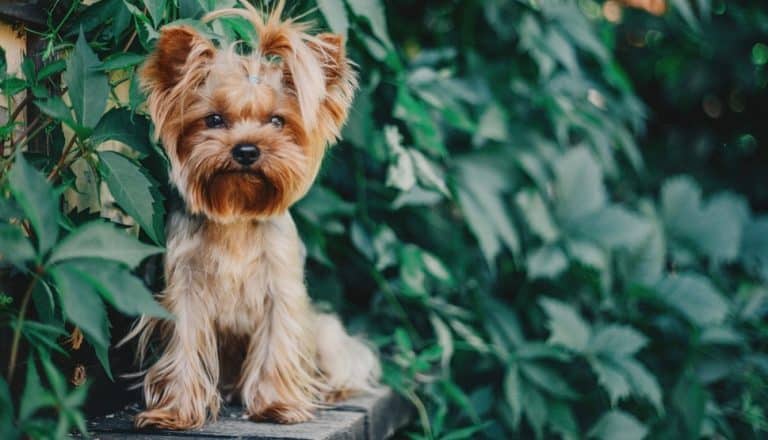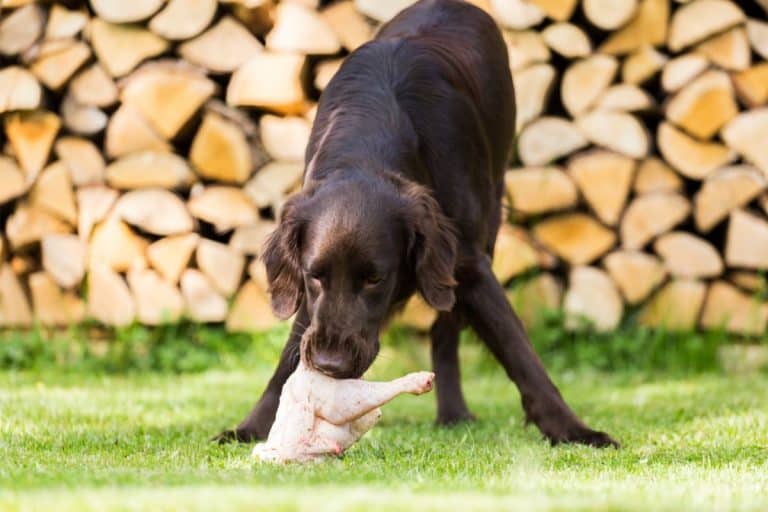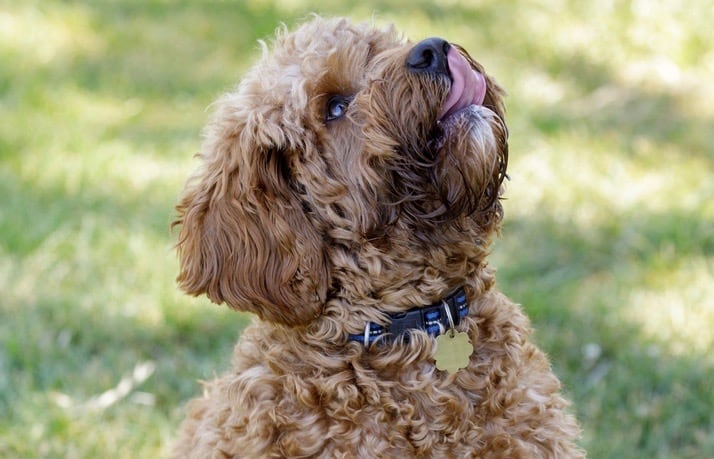Miniature Pinscher Weight Chart – Size & Growth Chart
If you have just adopted a Miniature Pinscher, you may have various questions regarding their size and growth. And you might be also wondering how big do Miniature Pinschers get?
The Miniature Pinscher weight chart will help you ensure that your puppy’s weight is ideal for their age.
Miniature Pinschers stop growing at the age of around 10 to 11 months. As adults, Miniature Pinschers stand between 10 and 12 inches and their weight is around 8 and 11 pounds.
This article will provide information on what to expect in a Miniature Pinscher growth chart, health conditions that affect them, and many more.
When Is A Miniature Pinscher Fully Grown?
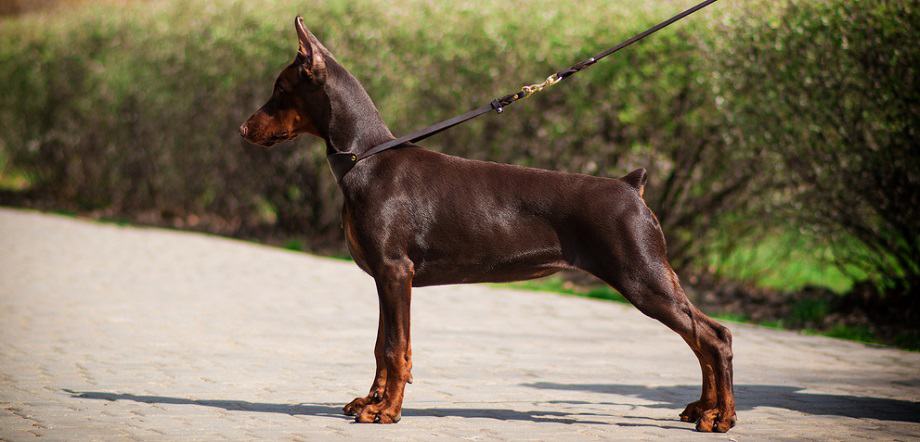
Generally, Miniature Pinscher puppies take a shorter time to reach their adult size compared to larger dogs. In the first six to seven months, a Miniature Pinscher puppy grows quickly then the growth rate slows as they start to put on muscle mass and fat.
Miniature Pinschers reach their adult size between the ages of 10 and 11 months, with a height of around 10 to 12 inches and weight between 8 and 11 pounds.
Their social and mental development continues until the age of 15 months but can be longer depending on the individual puppy.
Miniature Pinscher Weight Chart
| Age | Weight (lbs) | Weight (kg) |
|---|---|---|
| 3 Months | 3.9 lbs - 4.8 lbs | 1.76 kg - 2.2 kg |
| 4 Months | 4.7 lbs - 6.5 lbs | 2.2 kg - 2.9 kg |
| 5 Months | 6.3 lbs - 7.9 lbs | 2.8 kg - 3.6 kg |
| 6 Months | 7 lbs - 8.8 lbs | 3.17 kg - 4 kg |
| 7 Months | 7.6 lbs - 9.4 lbs | 3.45 kg - 4.2 kg |
| 8 Months | 7.9 lbs - 10 lbs | 3.6 kg - 4.5 kg |
| 9 Months | 8.1 lbs - 10.3 lbs | 3.7 kg - 4.7 kg |
| 10 Months | 8.4 lbs - 10.6 lbs | 3.8 kg - 4.8 kg |
| 11 Months | 8.7 lbs - 10.8 lbs | 3.9 kg - 4.9 kg |
| 12 Months | 9 lbs - 11 lbs | 4.1 kg - 5 kg |
A Miniature Pinscher weight chart will help you ensure that your puppy is maintaining a healthy weight for their age. The growth rate for male Miniature Pinschers is different from that of their female counterparts because they are generally bigger.
At 3 months, the weight of a male Miniature Pinscher should be around 3.9 to 4.8 pounds while that of a female Miniature Pinscher should be around 3.5 to 3.9 pounds.
At 6 months, female Miniature Pinscher weighs between 6.1 to 7 pounds while their male counterparts weigh between 7 to 8.8 pounds.
At one year, the weight of male Miniature Pinscher is between 9 and 11 pounds while their female counterparts weigh between 7.7 and 9 pounds.
As you can see, the rate at which your puppy gains weight in the first few months is quickly doubling their size in no time. Tracking the weight of your puppy using a Miniature Pinscher size chart ensures that they are not gaining unnecessary weight.
Miniature Pinscher Growth Chart – What to Expect
Birth – 2 Weeks
At this stage, the behavior of your puppy is mostly influenced by their littermates and mother. They will learn simple coordination, social skills, and ranking process from their mother. They spend most of their time eating and sleeping.
They depend on their mother’s milk for nutrition or formula if the mother is not present. During this neonatal stage, your puppy learns how to open their ears and eyes, and even start crawling awkwardly.
3 Weeks – 12 Weeks
This is the socialization stage, and your Miniature Pinscher will start exploring their surroundings. This is the right time to introduce your puppy to other dogs and people because they enjoy more playtime.
The puppy should still be with their mother and littermates because they still need to learn socialization cues and inhibited play biting.
At week 7, your puppy is ready for house training, and between week 9 and 12, you can introduce proper training because your puppy can now pay attention to detail and is working on their social skills.
4 Months – 9 Months
This is the juvenile stage, and your puppy will start understanding dominance and submission. Teething and chewing problems happened during this stage. If you have not trained your puppy by now, this is the right time to do it.
This is a critical time for your puppy’s development, and they can learn things such as following rules and potty training.
If your puppy is not spayed or neutered, this is the right time to do the procedures because they will start showing sexual behaviors.
10 Months – 18 Months
At this stage, your puppy will attain their adult weight and height. They will also reach their emotional maturity at around 15 months. During this stage, your puppy will show their dominance and will want to prove to be the leader of the pack.
You can start switching your puppy’s food to adult food. Ensure that you do the transitioning slowly to avoid stomach upsets.
Adult
As adults, Miniature Pinschers are done growing completely and their weight should not fluctuate. Your puppy needs to be fed healthy and balanced adult food to ensure that they are maintaining a healthy weight.
By now, your puppy should have developed their personality and have a daily routine that they are following. Ensure that your puppy is getting enough exercise by doing physical activities that they enjoy.
How Big Do Miniature Pinschers Get?
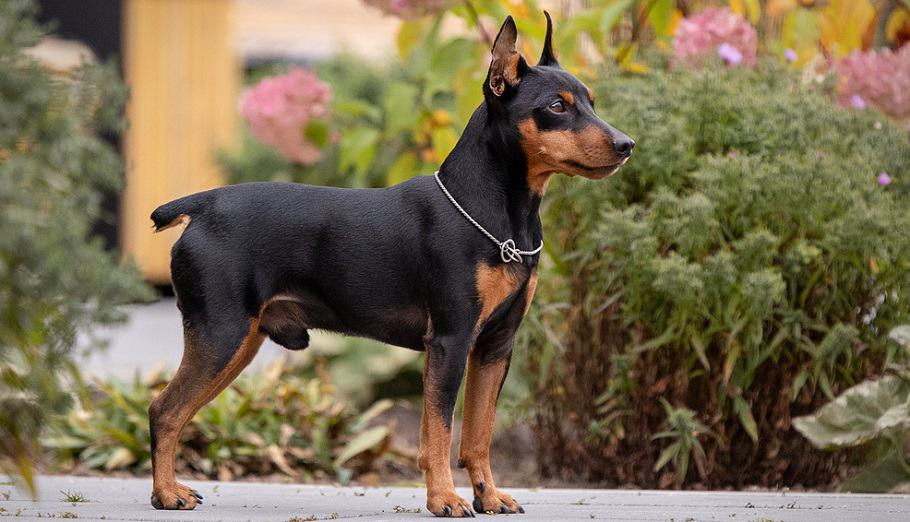
The adult size of your Miniature Pinscher puppy can be determined by looking at the parents or the paws.
The weight and height of your puppy’s parent can tell the adult size of your puppy because genetics is likely to be passed down from one generation to another.
If the parents are small, there is a high chance that your puppy will be small as an adult, and if the parents are big, your puppy will be big.
Looking at your puppy’s paws can also give you a rough idea of how big your puppy will get. If the paws are larger compared to other parts of your puppy’s body, then they will be bigger as adults.
Will Neutering/Spaying My Miniature Pinscher Affect His Growth?
Spaying is the surgical removal of female dog ovaries while neutering is the surgical removal of male dog testes.
Spaying or neutering your Miniature Pinscher should be done when they have reached puberty for males and before the first heat cycle for females. This is between the ages of 4 and 9 months.
You should speak to your vet to know the exact time you can spay or neuter your puppy. Neutering and spaying are known to reduce the risk of cancer-related to the reproductive organs, minimize aggression, and prevents breeding and pregnancy.
However, if done when the puppy is too young, spaying and neutering can affect the growth plates because reproductive and growth hormones are connected.
Miniature Pinscher Size Chart
You can measure the height of your Miniature Pinscher at home by using a measuring tape. Let your puppy stand next to a wall or frame and find the highest point of their shoulders, this is known as the withers.
Take the measuring tape and measure from the ground to the withers. This is your puppy’s height.
On average, female Miniature Pinscher stands at a height of around 10 to 11 inches while the height of male Miniature Pinchers is between 10 and 12 inches.
Chihuahua vs Miniature Pinscher Size
Miniature Pinschers are almost double the size of Chihuahuas. On average, Chihuahuas weigh between 4 and 6 pounds while Miniature Pinschers weigh between 8 and 11 pounds.
A Chihuahua stands at a height of around 6 to 10 inches while a Miniature Pincher’s height is around 10 to 12 inches.
Factors That Affect Miniature Pinscher Growth
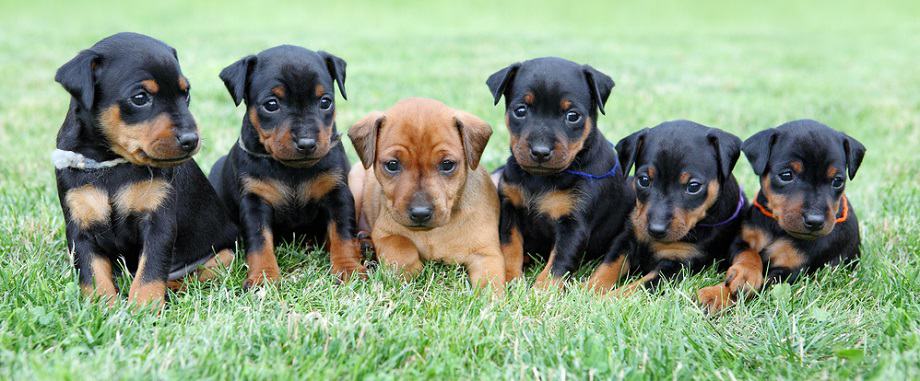
The following factors contribute to the healthy growth and development of your Miniature Pinscher:
Genetics & Gender
Like humans, Miniature Pinscher puppies can inherit certain physical features from their parents such as weight and height.
The size of your puppy’s parents will determine whether your puppy will be small or large when they are adults. If possible, talk to your breeder to give you information on your puppy’s parents.
Generally, male Miniature Pinscher is slightly heavier and bigger than female Miniature Pinscher.
Nutrition
The diet of your Miniature Pinscher should include lots of animal protein for growth purposes, omega fatty acids to support healthy skin and coat, carbohydrates for energy, and vitamins and minerals for digestive health and the immune system.
Dry kibble that is high in quality is recommended for Miniature Pinscher because it has balanced nutrition.
Ensure that your puppy has a steady feeding routine and avoid free-feeding them because they can be overweight easily.
Physical Activity & Health
Both physical activity and nutrition ensure that your puppy has a healthy weight. For Miniature Pinscher puppies, start with five minutes of daily walks then increase the length of the walk as they grow. Adult Miniature Pinschers can exercise for at least one hour per day.
Exercising your puppy will keep them healthy and fit to support their active life.
What If My Miniature Pinscher Is Not the Right Weight?
Is your Miniature Pinscher overweight or underweight? Before helping your puppy to gain or lose weight at home, take them to your vet to rule out any medical conditions that may be causing the changes in their weight.
Your vet will help you come up with a plan to help your puppy gain weight if they are underweight. However, if your puppy is overweight, you can help them lose weight at home by doing the following:
- Modify nutrition – reduce the amount of food you are feeding your puppy and ensure that the food is high in quality and balanced.
- Increase physical activity – start slowly then increase the intensity once your puppy has become stronger. The best exercises include fast walking, swimming, ball games, and agility sessions.
How Much Does It Cost to Own a Miniature Pinscher?
Are you thinking of getting a Miniature Pinscher and wondering how much it will cost you? Depending on the level of lineage and certifications, the price of getting a Miniature Pinscher ranges between $650 and $6,000.
For top-quality dogs, you will be assured of registration papers and health certifications. However, if your budget is limited, ensure that you screen where you get your dog.
Once you get your Miniature Pinscher, there are other expenses that you will incur including:
- Food – it may cost you around $30 per 13lb bag for commercial dog food.
- Medical expenses – your puppy needs vaccinations, de-worming, and neutering/spaying. Talk to your vet to know the costs.
- Grooming and bedding items – these depend on your preference.
Miniature Pinscher Genetics and Common Health Problems
The potential health problems that Miniature Pinscher are genetically predisposed include:
- Cataracts – this is where your puppy’s eyes have a cloudy appearance.
- Progressive retinal atrophy – this is where the eye’s retina gradually deteriorates causing night blindness but can also lead to total blindness.
- Urolithiasis – this is the formation of stones in the urine.
- Patellar Luxation
- Heart disease
- Allergies
- Digestive issues
- Sensitive skin
Even though the above conditions are recurrent, it is not guaranteed that your Miniature Pinscher will be affected by any or all of them in their life.
Regular visits to the vet will ensure that you are keeping up with your puppy’s health and you can monitor any health condition in the early stages. You can seek advice from your vet on how you can keep your puppy healthy and happy.
Final Words
Miniature Pinschers are great dogs to have in your home. Ensure that the breeder you are getting your puppy from is reputable and they should provide you with the health clearances of the puppy and their parents.
A wholesome diet with balanced nutrition and appropriate exercise for their age will keep your Miniature Pinscher in a healthy weight.
Typically, Miniature Pinschers are healthy dogs, but they are prone to certain diseases because of their genetics such as cataracts, therefore, regular visits to the vet will ensure that any condition is dealt with earlier.

